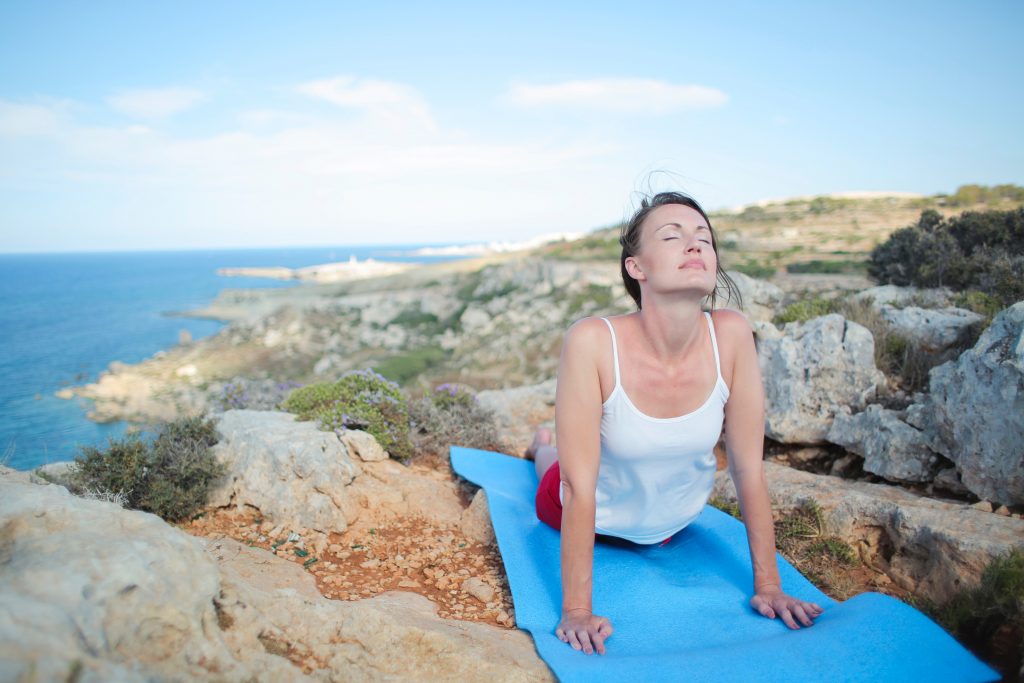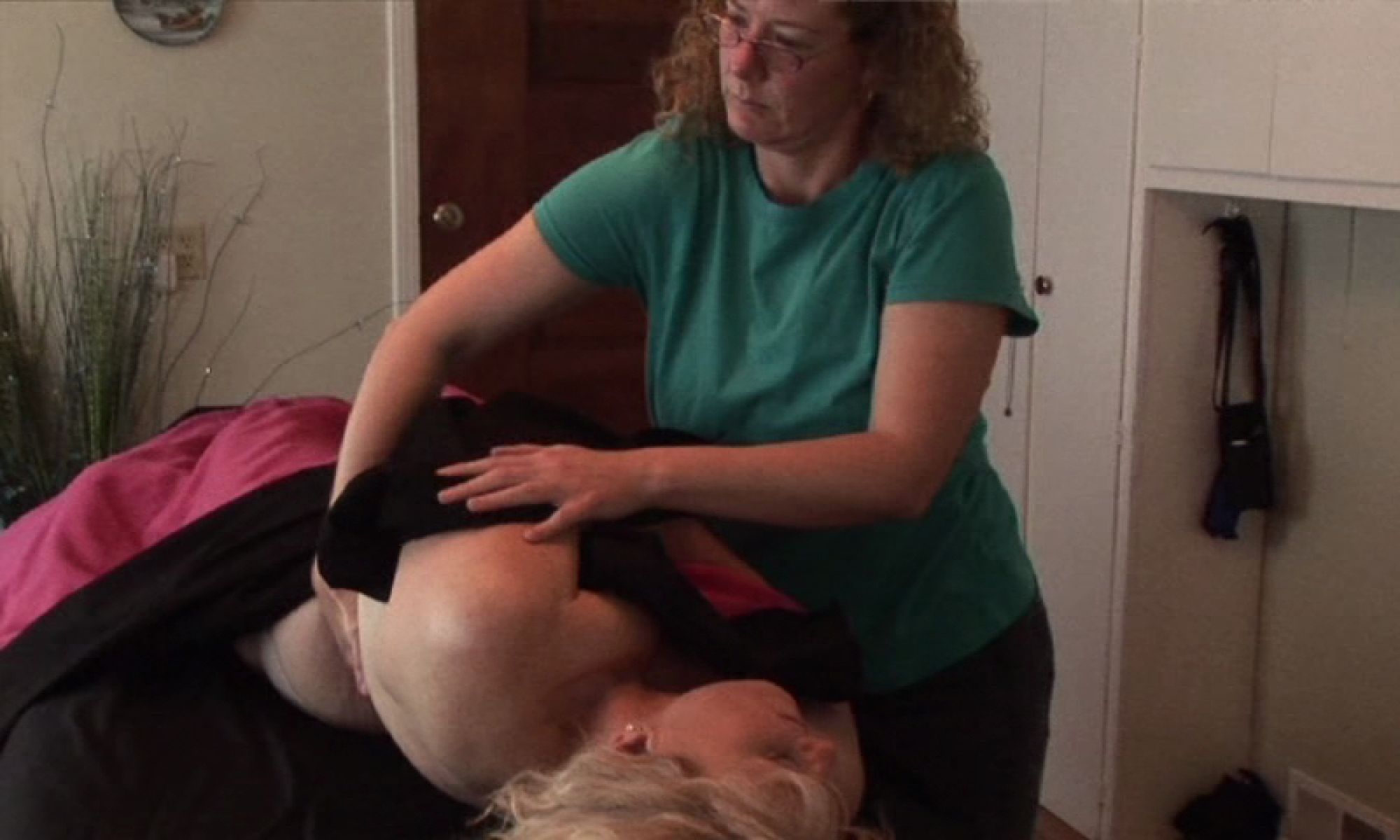
“Are you doing your stretching?” is always the question I ask my clients as they hobble into my office or when finding their hamstrings are like Golden Gate Bridge cables. However, this question should also asked by your PT, your massage therapist, your pain physiatrist, etc.
Inevitably the answer is: no, sort of, I used to, I have stretches at home, when I think about it, when I hurt, I should but I don’t, I don’t have time, I do think about it but it’s usually when I’m busy, usually only when I’m getting ready to work out, I can’t get on or off the floor for that stuff, I did that once and it didn’t work, I watch my wife do it every morning… and the list could go on and on and on and on….
I thought it may be beneficial for you to have some basics on this subject! Even just to see the surprise on your provider(s)’ face about your “yes” answer.
In the beginning…. Your ability to stretch may be exceptionally limited due to pain, tightness, discomfort, mental resistance, lack of experience or confidence in your abilities, or even embarrassment. THIS IS NORMAL! Remember if you’ve never done this before, you might be bad at it initially. And that’s ok. And it may take time to begin to feel any significant changes. As you didn’t accumulate muscle/tendon/ligament/fascia tightness overnight, you can’t expect to erase months, mostly likely years, of tension immediately. While everyone may want to suddenly be limber and gumby, the reality is stretching doesn’t have to be based on being Jane Fonda and getting yourself into a pretzel. Sometimes the best stretches are the simplest.
When I teach stretching to clients, I start with the explanation that the benefits from good quality stretching only lasts for approximately 3 hours. Thus, does it make sense why we ask clients to stretch multiple times per day? I explain that stretching helps to keep fluids moving in the joints, helps with exchange of fluids/nutrients/waste in the muscle fibers, warms up fascia connective tissue to allow for more give with movement, helps to improve posture, acts to aid in pain reduction, adds to relaxation, and encourages mental/spiritual clarity & quietness.
I encourage clients to have a stopwatch or timer with them to do their stretching. This is because I encourage stretches to be held for 30 seconds (at minimum) but preferably to hold them for 90 seconds. Yes, this is an eternity, especially if the stretch has discomfort associated with it. However, by taking the longer route, it provides you with the opportunity to allow your muscles to warm up and begin to relax; to allow you to begin to find mental stillness and your breath in the stretch, and to notice your body’s response to the stretch.
The words of wisdom are to go into a stretch slowly, hold it for 90-seconds, then come out of the stretch even slower. Diving into and out of stretches is a great way to injure the area and confuse the body about what is supposed to happen – relaxation!
I also strongly teach my clients about the balance act of stretching. So often we tend to focus more time, intensity, or pattens of stretching on the body part that cries out the loudest. But the body works in balance; thus, if you only stretch the painful side or area and not the opposite or associated areas, you only add to the body needing to compensate for the imbalance being created. What this means is you may start to feel more pain in the opposite side that is working harder and harder to help you cope with the side that is the main problem. So, help your body keep balance – balance out your stretching.
Did you know that stretching doesn’t require you to be on the floor? Heck, for many stretches you don’t even have to get out of your chair or bed!!!!! So the excuse of having trouble getting off the floor no longer holds any water; it’s just a resistance you’ve created to get out of doing it! Did you know that if you are lucky enough to have access to a pool/hot tub that it also provides an excellent place to stretch? Especially if you are unstable in your balance/gait, are afraid of falling, or if standing is painful. Being in a weightless environment to stretch (like a pool) allows you to put some of your fears to ease and may even help you to get a little extra movement in for the day!
Develop a routine of not only when you stretch, but the stretches you do. Putting stretching into your daily routine should be like brushing your teeth. The routine you create should include when in your day you’ll stretch. Make it as important so that when you forget to do it, it’s creates a reinforcement to ensure you get to it everyday. Some people stretch initially prior to getting out of bed, some do it after their morning coffee, some do it while watching the morning TV/news. Finally, find a routine to use. Trying to create this on the fly can be difficult and gives you the ability to do only the ones you like. The body is great at learning to adapt to things we challenge it with. For instance, any personal trainer will tell you that if you don’t change things up, the body grows bored and it is hard to continue to see improvement. Stretching is no different. If you don’t challenge your body with a new routine at least monthly, you’ll grow stale in your progress.
Last but not at all least, I teach my clients about listening to their body and breathing on a scale to work towards their “edge”. The “edge” is a range that we can all use for pain. The least stressful or painful end is where you can say easily, “I’m ok, I don’t hurt, and I have no trouble breathing.” As the stretch intensifies, you might say, “I’m ok, I can feel the stretch, no problems breathing or relaxing into the stretch.” The next step of intensity may be, “I’m ok, I’m starting to hold my breath or I’m having some trouble relaxing into it.” Finally, there is a clear line where people go from being ok to not being ok. I usually encourage people (over time) to find that edge and work up to it, WITHOUT going over. It’s one thing to initially have pain/discomfort from cold tissues/fascia just needing to warm and stretch out – this usually takes only a few seconds before the discomfort begins to dissipate. But if you have pain that stops or catches your breathing, makes you cry out in pain, or causes significant discomfort that doesn’t ease with the stretch; then you’ve pushed past the edge.
Stretching, like all forms of movement, requires practice. So if you can’t touch the floor initially or you can only touch part way down your thighs in a forward bend, THAT IS OK! You may be very surprised what you’ll be able to do after even a few weeks of working at it!
I’m including a link below for stretching created by a local neurosurgical group in Northern Nevada. However a search of the web or YouTube has thousands of videos and stretching ideas to put into practice. Just remember, you will need more than 1 stretching routine, you may need to start small and easy to work your way up, and some stretching is ALWAYS better than none.
Exercises to relieve back pain and strengthen the back | SpineNevada – Reno, Sparks, Carson City
I hope this has been helpful for you.


